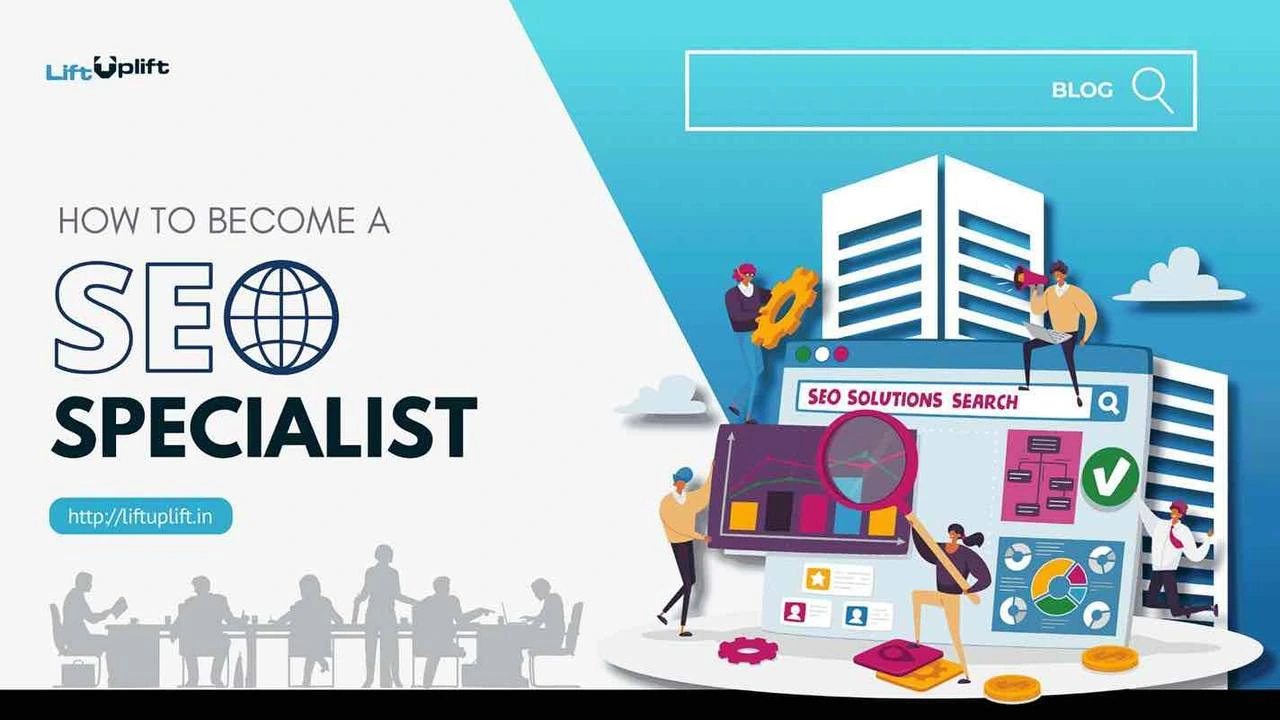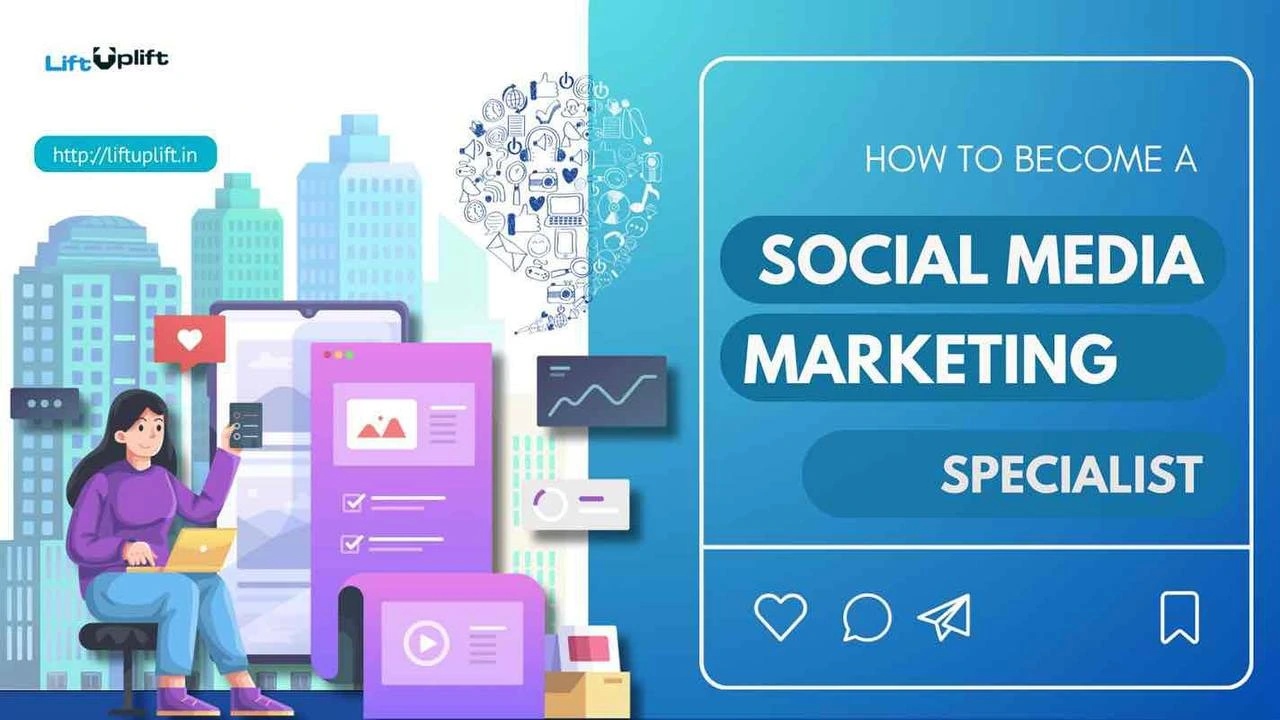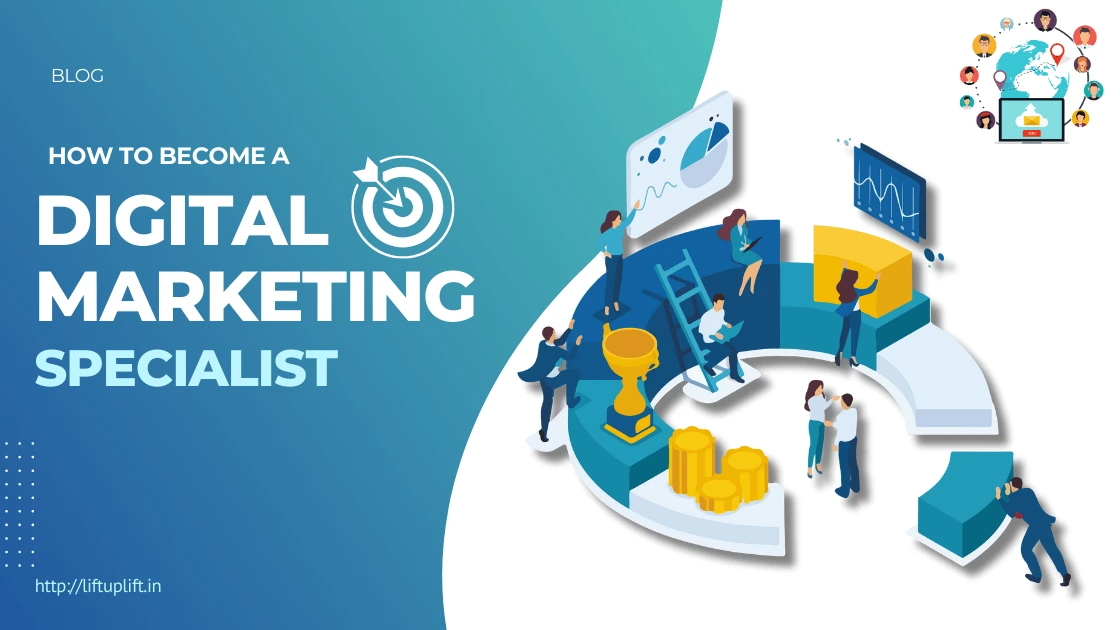In today’s fast-paced and highly digital world, businesses need to stay ahead of the curve to reach their target audience effectively. Marketing is a critical component of any business’s success, and it’s essential to understand the differences between differences between Digital Marketing vs Traditional Marketing. Traditional marketing has been the go-to approach for decades, but with the rise of social media platforms, there has been a significant shift in the way businesses connect with their customers. In this discussion, we will explore the key differences between traditional marketing and social media marketing, their benefits and drawbacks, and how to decide which approach is right for your business. So, buckle up and get ready to learn about the exciting world of marketing in the 21st century!
What is digital marketing?
Digital marketing is a marketing strategy that utilizes digital channels, such as social media, email, search engines, and websites, to promote products or services, increase brand awareness, and drive sales. It involves creating and sharing content, targeting specific audiences, and measuring the effectiveness of campaigns in real-time to improve ROI.
Modes of digital marketing
Digital marketing is a broad term that encompasses various online marketing techniques, including search engine optimization (SEO), pay-per-click (PPC) advertising, social media marketing, email marketing, content marketing, influencer marketing, and more.
1. SEO is a technique used to optimize a website to rank higher on search engine results pages (SERPs) organically. This involves optimizing website content, keywords, and structure to improve visibility on search engines like Google and Bing.
2. PPC advertising involves placing ads on search engines or social media platforms and paying a fee every time someone clicks on the ad. This type of advertising can target specific keywords, demographics, and locations to increase the likelihood of conversions.
3. Social media marketing involves using social media platforms like Facebook, Instagram, Twitter, and LinkedIn to build brand awareness, engage with customers, and drive traffic to websites. This involves creating and sharing content, running paid ads, and analyzing performance metrics to optimize campaigns.
4. Email marketing involves sending marketing messages to a targeted list of email subscribers to promote products or services, build brand loyalty, and increase sales. This type of marketing can include newsletters, promotional emails, and automated email campaigns.
5. Content marketing involves creating and sharing valuable and relevant content to attract and retain a specific target audience. This type of marketing can include blog posts, infographics, videos, and other forms of content.
6.Influencer marketing involves partnering with influential individuals or organizations to promote products or services to their audience. This type of marketing can include sponsored posts, product reviews, and endorsements.
7.Display ads are a type of online advertising that uses text, images, and videos to display targeted ads on websites, social media platforms, and mobile apps. They are designed to capture users attention and encourage them to click on the ad, which can drive traffic to the business’s website and increase conversions.
Digital marketing is a critical aspect of modern-day marketing, as more and more people are spending time online. It provides businesses with an opportunity to connect with their target audience in a personalized way, measure the effectiveness of their campaigns, and achieve their marketing goals in a cost-effective manner.
What are display ads ?
Digital marketing is an all-encompassing marketing strategy that includes various techniques and tools to promote products or services online. Display ads are another key component of digital marketing that businesses can leverage to reach their target audience.
One of the significant benefits of display ads is their ability to target specific audiences based on demographics, interests, and behaviors. This targeting can improve the effectiveness of campaigns and increase ROI. For example, a pet food company can target users who have recently searched for dog food on Google or pet-related topics on social media platforms.
Display ads can also improve brand awareness and visibility by reaching a broader audience. By displaying ads on popular websites or social media platforms, businesses can expose their brand to new customers who may not have heard of them before.
Display ads can also be a cost-effective advertising strategy compared to traditional advertising methods. Many social media platforms offer advertising options that allow businesses to set their budget and only pay when someone clicks on their ad or takes a specific action.
Display ads overall are an effective tool for businesses engaging in digital marketing. They allow businesses to target specific audiences, increase brand awareness, drive website traffic and conversions, and do so in a cost-effective way. By incorporating display ads into their digital marketing strategy, businesses can achieve their marketing goals and stay ahead of the competition.
Importance of Digital Marketing
1. Budget-Friendly Marketing – Digital marketing can be a cost-effective way for small businesses and startups to promote their products and services.
2. Equal Opportunities – Digital marketing provides equal opportunities for all businesses, regardless of their size or budget, to attract their targeted customers.
3. Power of Content – Content is a crucial aspect of digital marketing that can engage and influence the audience.
4. Increased Conversions – Digital marketing can lead to more traffic being converted into prospective customers, which can determine the success of a campaign.
5. Revenue Boost – Engaging more customers through digital marketing can result in higher profits and help businesses expand domestically and internationally.
6. Brand Awareness – Digital marketing can help create brand awareness, trust, and confidence amongst customers by keeping them informed about new products, offers, and activities.
7. Better Return on Investment – Digital marketing can help businesses maximize profits while minimizing costs, resulting in a better return on investment (ROI).
Why Digital marketing?
With the rise of technology, digital marketing has become a popular way for businesses to promote themselves. It involves using the internet and social media to reach potential customers. This is much more cost-effective than traditional marketing methods like TV or magazine ads. In fact, there are over 4.6 billion people on social media, making it a great place to advertise.
Digital marketing is constantly evolving, so it’s important for businesses to stay up-to-date on the latest technology and tactics. One major advantage of digital marketing is the ability to track customer engagement and collect data for future use. It’s also possible to advertise for free on many platforms, like sending emails instead of printing postcards. And because digital marketing has a global reach, businesses can attract customers from all over the world.
- Digital marketing allows for more targeted advertising, which means businesses can reach specific audiences based on factors like age, location, interests, and more.
- With digital marketing, businesses can easily test and measure the effectiveness of their advertising campaigns in real-time. This helps them make adjustments and optimize their strategies for better results.
- Digital marketing allows for more interactive and engaging advertising formats like videos, interactive graphics, and games. This helps capture and hold the attention of audiences more effectively.
- Compared to traditional marketing, digital marketing strategies can be implemented much faster and with greater flexibility. Changes and updates can be made quickly and easily without having to go through lengthy production processes.
- Digital marketing allows businesses to build and maintain relationships with their customers through various channels like social media, email marketing, and chatbots. This helps improve customer loyalty and retention.
Disadvantages of Digital Marketing:
1. High competition: Due to the low barrier to entry, there is a high level of competition in digital marketing. This makes it challenging for businesses to stand out and gain visibility.
2. Rapidly changing landscape: The digital marketing landscape is constantly evolving, and businesses need to keep up with the latest trends and technologies to remain competitive.
3.Technical skills required: Digital marketing requires technical skills such as SEO, PPC, and social media management. These skills can be challenging to acquire, especially for small businesses.
4.Over-reliance on technology: Digital marketing relies heavily on technology, and any technical issues can have a significant impact on the success of a campaign.
What is Traditional Marketing?
Traditional marketing refers to the traditional methods of advertising and promoting products or services that have been in use for many years, even before the advent of the internet. This includes methods such as print advertisements in newspapers, magazines, brochures, billboards, and flyers, as well as television and radio commercials. It is a form of marketing that does not rely on the internet or digital technology for promotion.
Importance of traditional marketing
Traditional marketing refers to the use of conventional advertising methods such as TV commercials, newspaper ads, billboards, and flyers to promote products or services to potential customers. Here are some reasons why traditional marketing is still important:
1. Easy to Connect: With traditional marketing, businesses can easily target their potential customers in a particular geographical area through newspapers or TV channels.
2.Physical Copies: Traditional ads can be saved by customers as a reference to the product features, prices, or offers. They can even share these ads with friends and family who may be interested in the product.
3.Easy to Recognize: As traditional marketing has been around for a long time, people are accustomed to it and can recognize it easily.
4.Better Reach: Traditional marketing has a vast audience base and a single advertisement can reach millions of potential customers across different regions. Additionally, people living in areas with limited internet access or connectivity can still learn about the business or products through traditional ads.
Why Traditional Marketing?
The debate between traditional marketing and digital marketing is a popular topic. Traditional marketing doesn’t require the internet and has been around for decades. You can see traditional marketing ads on TV, in newspapers, on the radio, and on flyers and banners around the streets. Traditional marketing aims to attract people’s attention without the internet.
For some businesses, traditional marketing strategies work better depending on their target audience. Traditional marketing is particularly effective in reaching older people who watch TV and read newspapers more than younger people. Small businesses can benefit from using flyers and billboards to attract a local audience.
One big advantage of traditional ads is that they are repeated often, whereas digital ads can be skipped.
- Traditional marketing can help build brand recognition and trust, as people may feel more familiar and comfortable with ads they see on TV or in print.
- Some types of businesses, such as those that sell physical products or services, may benefit more from traditional marketing as it allows customers to see and touch the product or speak with someone in person.
- Traditional marketing can also be more targeted to specific local audiences, as ads can be placed in newspapers or on billboards in specific areas.
- While digital marketing allows for more data tracking and analysis, traditional marketing can be harder to measure in terms of its effectiveness.
- Traditional marketing can also be more expensive, especially for larger campaigns like TV ads or billboards, so it may not be as feasible for smaller businesses with limited budgets.
Disadvantages of Traditional Marketing:
1. Limited reach: Traditional marketing is limited to a specific geographic area and audience. This makes it difficult to reach a wider audience and grow beyond the local market.
2.Higher cost: Traditional marketing methods such as print, TV, and radio ads are expensive, making it difficult for small businesses to compete with larger brands.
3.Difficult to track ROI: It is challenging to track the exact ROI of traditional marketing campaigns. This makes it challenging to measure the success of a campaign and optimize future strategies.
4.Limited engagement: Traditional marketing is a one-way communication method, where businesses send messages to their target audience. This makes it difficult to engage with the audience and create a two-way conversation.
Modes of Traditional Marketing
Traditional marketing refers to conventional advertising methods that have been in use for a long time. The objective of traditional marketing is to reach a broad audience through various mediums like television, radio, newspapers, magazines, billboards, flyers, and direct mail. Here are the most common types of traditional marketing:
1.Print advertising: This includes newspapers, magazines, brochures, flyers, and direct mail. Print advertising is an effective way to target a specific audience with information about a product or service.
2.Broadcast advertising: This includes television and radio commercials, which are designed to reach a mass audience. The aim is to make a lasting impression on the audience with a memorable advertisement.
3.Outdoor advertising: This includes billboards, banners, and posters, which are placed in high traffic areas to grab the attention of people passing by. Outdoor advertising is a great way to reach a large number of people in a short amount of time.
4.Direct mail: This is a form of advertising that is sent directly to a customer’s mailbox. Direct mail can be used to promote products and services, as well as to announce sales and special offers.
5.Telemarketing: This involves contacting potential customers over the phone to promote a product or service. Telemarketing can be an effective way to reach a large audience, but it can also be intrusive and annoying to some customers.
Cost comparison of traditional marketing and digital marketing.
Traditional marketing is still an essential part of advertising for many businesses, as it can effectively reach a broad audience through various channels. However, with the rise of digital marketing, traditional marketing methods are becoming less prevalent.
Traditional marketing methods, such as print ads, TV commercials, and billboards, tend to be more expensive compared to digital marketing tactics. For example, a 30-second TV ad during prime time can cost hundreds of thousands of dollars, and printing flyers and brochures can also be costly.
On the other hand, digital marketing can be a more cost-effective way to reach a larger audience. Platforms like social media and email marketing can be used to promote products and services at little to no cost, while paid online advertising can be tailored to a specific budget.
Additionally, digital marketing allows for more precise targeting of specific demographics and interests, reducing the chance of marketing to irrelevant audiences. Traditional marketing methods tend to cast a wider net, with less control over who sees the ad.
Ultimately, the cost comparison between traditional marketing and digital marketing will depend on the specific business and its goals. However, as technology continues to advance, digital marketing is becoming an increasingly popular and effective choice for businesses of all sizes.
Summary
The topic of traditional marketing vs. digital marketing has been discussed in detail in the above content. Traditional marketing refers to marketing that does not require the internet for advertising purposes and has been evolving for decades. On the other hand, digital marketing is a modern method of marketing that uses the internet and smartphones to reach a wider audience.
Both traditional and digital marketing have their advantages and disadvantages. Traditional marketing can be effective in reaching an older population and establishing a local presence, but it can also be expensive and difficult to track the success of the campaigns. Digital marketing can be cost-effective, provides better targeting options, and easier to track, but it requires expertise and knowledge of constantly evolving technologies.
When it comes to cost comparison, digital marketing is often more cost-effective than traditional marketing, especially for small businesses. However, it is important to consider the target audience and the type of business when deciding on the marketing strategy.
Overall, both traditional and digital marketing have their place in the marketing world, and businesses should carefully evaluate their options before deciding which approach to take.
Frequently asked questions
What is traditional marketing?
Traditional marketing refers to the conventional methods of advertising and promoting products or services. These methods include television and radio commercials, print ads, billboards, flyers, and other physical advertising materials.
What is digital marketing?
Digital marketing is the use of electronic devices and digital channels to promote products or services. This includes email marketing, social media marketing, search engine optimization, and other forms of online advertising.
What are the advantages of traditional marketing?
Traditional marketing allows for a more personal approach to advertising, and it can be easier to target a local audience. Additionally, it can be easier to establish trust and credibility with traditional marketing methods, such as in-person meetings and events.
What are the disadvantages of traditional marketing?
Traditional marketing methods can be more expensive and less effective at reaching a wider audience. It can also be more difficult to track the success of traditional marketing campaigns, and it may take longer to see results.
What are the advantages of digital marketing?
Digital marketing is often more cost-effective and can reach a wider audience, including a global audience. It is also easier to track the success of digital marketing campaigns in real-time, allowing for more effective targeting and optimization.
What are the disadvantages of digital marketing?
Digital marketing can be less personal than traditional marketing, and it may be more difficult to establish trust and credibility online. Additionally, there is a lot of competition in the digital marketing space, making it more challenging to stand out and be heard.
How does social media marketing fit into digital marketing?
Social media marketing is a type of digital marketing that utilizes social media platforms such as Facebook, Instagram, Twitter, and LinkedIn to reach and engage with target audiences. It involves creating and sharing content, as well as paid advertising options.
Can traditional marketing and digital marketing be used together?
Yes, traditional marketing and digital marketing can be used together in a complementary manner. For example, a company may use print ads in a newspaper to reach a local audience, while also utilizing digital marketing techniques such as social media advertising to reach a global audience.



